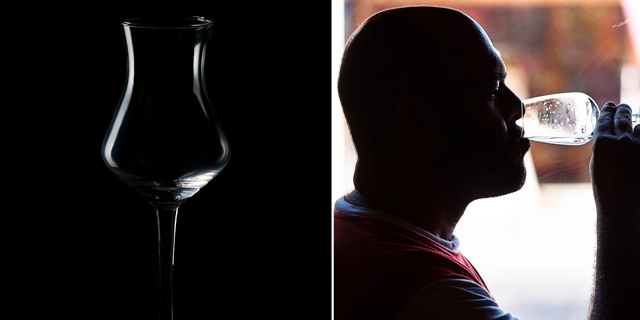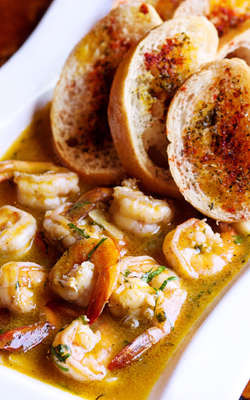We all have pre-conceptions about spirits. Vodka, for example, is the first choice for cocktails and drinks; tequila, to start or end a party; gin, for travelling to exotic, malaria ridden destinations. But what about pisco? Marketers in the US are trying to sell it as the next big thing in cocktails. For anybody who has ever visited Peru, pisco most likely associated with five pisco sours in some dive bar, maybe dancing on tables, and probably a day-after headache.
The truth is that a pisco sour is to pisco what a sidecar is to cognac: nice enough, but not really doing justice to that classy spirit.
Classy? Pisco? Absolutely. Real pisco is miles away from the industrialized stuff found in most bars and happy hours. The key to Peruvian pisco is the process; the juice from the first pressing of the grapes is fermented for 14 days and then distilled only once, to proof, better preserving the flavors of the grapes. For pisco mosto verde, this is cut to seven days and results in a smoother final product.
The distillate is divided into three parts, the head, heart, and the tail. The head and tail are both discarded because of impurities or incorrect alcohol levels. Only the heart is kept and it’s considered the truest possible reflection of the grapes and the land where they were grown. This clear and easily recognizable sense of origin sets pisco apart among white spirits. It goes far beyond cocktails, it is a spirit to sip neat; or serve chilled as a great pair for the powerful flavors of Peruvian food.
TLK sat down with Ricardo Carpio, who, for the last decade, has run PiscoBar, a simple, no frills place that has become Lima’s temple of pisco. Recently he joined forces with chef Israel Laura who is renowned for his creative local creole cuisine. They have developed a short but seriously tasty menu and have embarked on a mission to educate all comers and inspire a new way of looking at (and enjoying) pisco. Ricardo and a few other passionate advocates dream of pisco being ordered in bars not only by varietal, but by producer or even region.
Next, Carpio shares his pisco secrets…
[ pagebreak ]TLK: Why a pisco bar?
RC: The tradition and culture of pisco makes it a spirit that is unique in the world, so there is something new to explore and learn. It is also a kind of living tribute to my grandfather, who taught me to love my country and its products above all things, and the best way was making a pisco bar for him to enjoy with friends, family and students. (He was a professor.)
TLK: Why pure pisco rather than cocktails?
RC: Many people exaggerate the importance of pisco´s alcoholic graduation. Pisco, depending on how you combine it, can captivate anyone with its aromas and flavors. Which is why drinking it pure is the best way to comprehend its character.
TLK: What is the best thing about living in the world of pisco?
RC: Being able to educate every person I talk to, just like my suppliers Cholo Matias and Torre de la Gala did with me, and in this way try to position Peru as having one of the greatest spirits in the world.
TLK: And the most difficult?
RC: Making Peruvians recognize the gem that they have in their hands, and taking care not to lose it [the culture of pisco]. Also, it is a shame to see the large scale pisco production which doesn’t appreciate the value of pisco and chases profit over quality.
TLK: What is the key to pairing pisco?
RC: Similarly to wine, you must know the processes, products, terroirs, and the ingredients which you are going to combine. Also key is the service temperature: ambient, chilled, or with a small ice cube.
TLK: Could you name four piscos that you like for pairing with food, and suggest what they might best accompany?
RC: Torre de La Gala Torontel with ceviche (It is heavenly with Isreal’s hot and cold ceviche wantan); Cholo Matías Albilla with a prawn dish; Torre de La Gala Negra Criolla with wine braised veal; and Cholo Matias Moscatel with seafood stir-fry.
TLK: Any tips for cooking with pisco?
Try flambéing; choose the varietal according to what you are cooking or drizzle a little pisco over your dish before serving to add aroma.
TLK: A pisco in the US that is good to try neat?
You can try Campo de Encanto Moscatel.
Next, a primer on pisco…
[ pagebreak ]Pisco Varietals 101:
The grapes from which pisco is made are divided into two groups:
Non-aromatic:
Quebranta, Negra Criolla, Mollar, Uvina, and these are generally known for richer flavors of sweet fruit and chocolate. Quebranta is the most common grape from which pisco is made and additionally will have flavor notes of hay, black raisins and toasted pecans. While some producers bottle Negra Criolla pure, the others are mostly used to add body and depth of flavor to Acholado (blended) pisco.
Aromatic:
These varietals are of the muscat family have more distinctive personalities although based on floral, tropical fruit lines and are most often used for pure or mosto verde piscos. Italia has a powerful, sometimes overwhelming perfumed nose of orange blossom and jasmine with apricots and sweet fruit on the palate. Muscatel is more elegant and smooth than the others, with flavors of vanilla, honey and pear. Torontel has intensely fruity and flowery aromas with a more velvety body and touches of lemon. Albilla is elegant and delicate; it is slightly more spicy and herby than its brothers with hints of melon and banana.
If you’re in Peru, look out for:
Torre de la Gala (Arequipa)
Cholo Matias (Ica)
Inquebrantable (Ica)
Tres Generaciones (Ica)



![Making Mealtime Matter with La Familia: Easy Sofrito [Video]](https://thelatinkitchen.com/wp-content/uploads/2015/10/sofrito-shutterstock__0-500x383.jpg)
![Easy Latin Smoothies: Goji Berry Smoothie [Video]](https://thelatinkitchen.com/wp-content/uploads/2015/12/goji_berry-shutterstock_-500x383.jpg)
















![Fun and Fast Recipes: Fiesta Cabbage Salad [Video]](https://thelatinkitchen.com/wp-content/uploads/2015/11/fiesta_cabbage_slaw-shutterstock_-500x383.jpg)









